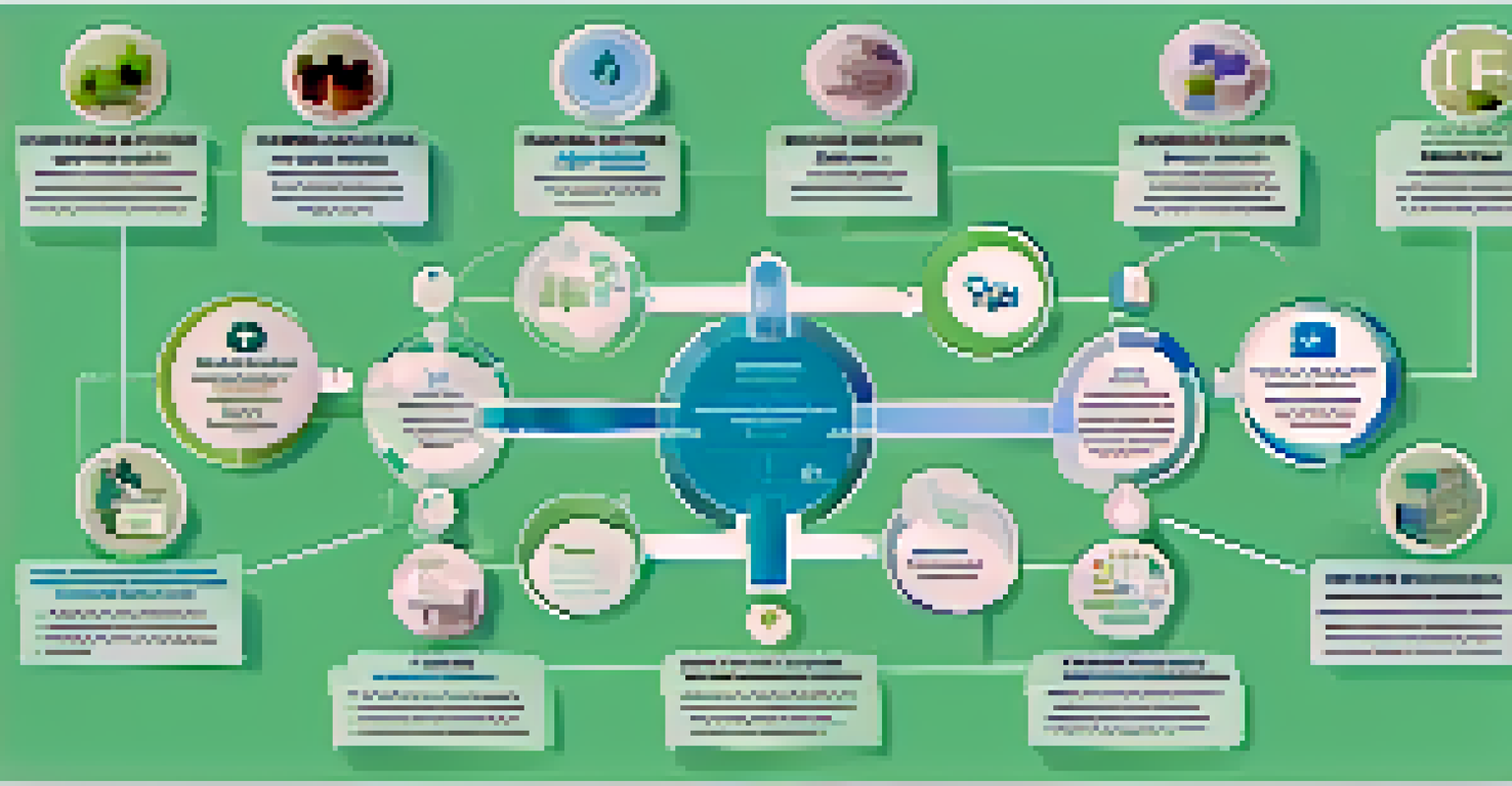Understanding Pharmaceutical Economics in Healthcare Decisions

What is Pharmaceutical Economics and Its Importance?
Pharmaceutical economics is the study of how drugs and therapies impact healthcare costs and decision-making. It plays a crucial role in understanding the financial implications of medical treatments, helping stakeholders make informed choices. By evaluating the cost-effectiveness of medications, healthcare providers can determine which treatments provide the best value for patients and the healthcare system as a whole.
The greatest wealth is health.
For instance, consider a new cancer drug that promises great results but comes with a hefty price tag. Pharmaceutical economics allows us to assess whether the benefits, like increased survival rates, justify the costs when compared to existing treatments. This analysis is vital for ensuring that healthcare resources are used efficiently and effectively.
Ultimately, pharmaceutical economics influences policy decisions, insurance coverage, and patient access to medications. By prioritizing economic evaluations, we can better align healthcare spending with patient needs and outcomes, fostering a more sustainable healthcare system.
Key Concepts in Pharmaceutical Economics
Several key concepts underpin the field of pharmaceutical economics, including cost-effectiveness analysis (CEA) and quality-adjusted life years (QALYs). CEA compares the relative costs and outcomes of different treatments, helping to identify which provides the best value. Meanwhile, QALYs measure the value of health outcomes by considering both the quantity and quality of life gained from a treatment.

Imagine two treatments for a chronic condition: one is more expensive but significantly improves quality of life, while the other is cheaper but only marginally effective. By using CEA and QALYs, healthcare decision-makers can evaluate which option is more beneficial for patients and the healthcare system alike. This approach ensures that both financial and human factors are considered in treatment choices.
Importance of Cost-Effectiveness
Pharmaceutical economics helps assess the financial implications of treatments, guiding stakeholders towards cost-effective healthcare decisions.
Additionally, understanding concepts like budget impact analysis and incremental cost-effectiveness ratios (ICERs) further enhances decision-making. These tools provide a comprehensive view of how new therapies fit into existing healthcare budgets and their potential impact on overall healthcare spending.
The Role of Stakeholders in Pharmaceutical Economics
Various stakeholders play a role in pharmaceutical economics, including policymakers, healthcare providers, payers, and patients. Each group has unique perspectives and priorities that shape healthcare decisions. For example, policymakers focus on ensuring access to effective treatments while managing public health budgets, while healthcare providers prioritize patient outcomes.
An ounce of prevention is worth a pound of cure.
Payers, such as insurance companies, are concerned with cost containment and will often use economic evaluations to determine which drugs to cover. Patients, on the other hand, seek affordable, effective treatments that meet their needs. Balancing these diverse interests can be challenging, but it is crucial for creating a healthcare system that benefits everyone.
As healthcare costs continue to rise, collaboration among stakeholders becomes increasingly important. By engaging in dialogue and sharing data, these groups can work together to develop policies that promote access to high-quality medications while maintaining financial sustainability.
Real-World Applications of Pharmaceutical Economics
Pharmaceutical economics has practical applications in various healthcare settings. For instance, hospitals may use economic evaluations to determine which medications to stock based on their cost-effectiveness and patient outcomes. Similarly, health insurance companies rely on these analyses to formulate coverage policies and negotiate prices with pharmaceutical companies.
In the realm of public health, governmental agencies often utilize pharmaceutical economics to allocate resources effectively. By evaluating the economic impact of vaccines or treatments for communicable diseases, they can prioritize funding for interventions that provide the greatest public health benefit.
Stakeholders Shape Healthcare Choices
Various stakeholders, including policymakers and patients, influence healthcare decisions based on their unique perspectives and priorities.
Moreover, pharmaceutical companies themselves use these evaluations during the drug development process. Conducting cost-effectiveness analyses can help them understand market potential and guide pricing strategies to ensure their products are both profitable and accessible.
Challenges in Pharmaceutical Economics
Despite its importance, pharmaceutical economics faces several challenges. One significant issue is the lack of standardized methods for conducting economic evaluations, which can lead to inconsistent results. Different studies may use varying assumptions or methodologies, making it difficult to compare findings across the board.
Additionally, there are ethical considerations when quantifying the value of life and health outcomes. How do we assign a monetary value to a year of life gained from a treatment? These questions can spark intense debate among stakeholders, complicating the decision-making process.
Finally, the rapidly evolving landscape of healthcare and pharmaceuticals, including the introduction of personalized medicine and emerging technologies, poses a challenge for economic evaluations. As new treatments become available, adapting existing frameworks to accurately assess their value is crucial for continued progress in pharmaceutical economics.
Future Trends in Pharmaceutical Economics
As the healthcare landscape evolves, so too does pharmaceutical economics. Emerging technologies, such as artificial intelligence and big data analytics, are increasingly being utilized to enhance economic evaluations. These tools can provide more accurate predictions of treatment outcomes and costs, leading to better-informed decisions.
Moreover, the growing emphasis on personalized medicine is reshaping how we approach economic evaluations. Treatments tailored to individual patients may offer improved outcomes, but they can also come with higher costs. Balancing these factors requires innovative economic models that account for variability in patient responses.
Challenges in Economic Evaluations
Pharmaceutical economics faces challenges such as inconsistent evaluation methods and ethical dilemmas in valuing health outcomes.
Finally, there is a push for greater transparency in pharmaceutical pricing and reimbursement processes. Stakeholders are advocating for clearer communication regarding the value of medications, which can lead to more equitable access to treatments and improved patient outcomes in the long run.
Conclusion: The Importance of Understanding Pharmaceutical Economics
Understanding pharmaceutical economics is vital for making informed healthcare decisions that balance cost and patient outcomes. By evaluating the economic impact of treatments, stakeholders can prioritize interventions that deliver the greatest value to patients and the healthcare system. This approach fosters a more sustainable healthcare environment, ensuring that resources are allocated wisely.
Furthermore, as healthcare continues to evolve, staying informed about pharmaceutical economics will become increasingly important. With the rise of personalized medicine, new technologies, and shifting policy landscapes, a solid grasp of economic principles can empower stakeholders to navigate these changes effectively.

In summary, by appreciating the nuances of pharmaceutical economics, we can contribute to a healthcare system that prioritizes both patient well-being and economic sustainability, ultimately leading to better health outcomes for all.